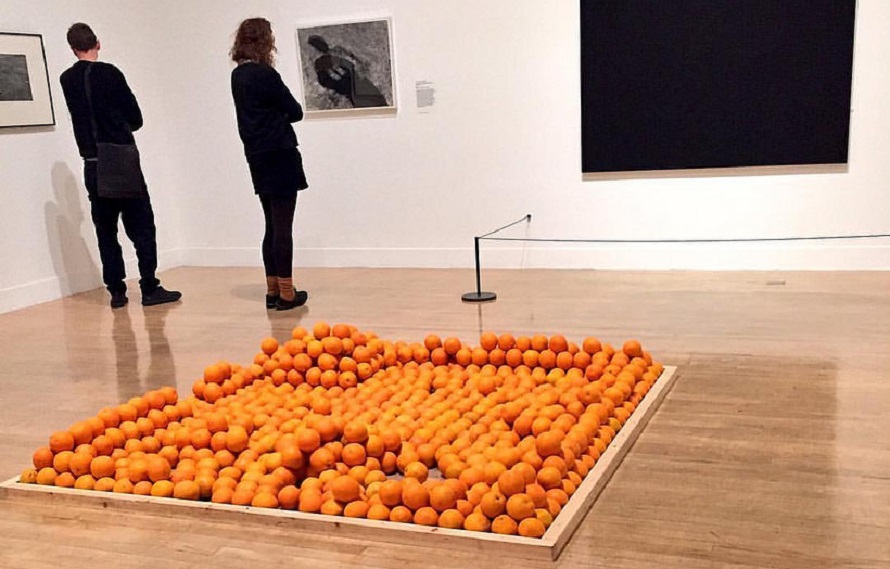During the exam period, in an attempt to escape revision, I scoured the art section of my sixth form library and decided to spend my free period reading about Abstract Expressionism.
Whilst I admired Rothko’s bold use of colour, and the movement and energy of De Kooning, my friends proceeded to mock the paintings. Their most common criticism was “even I could have done that,” as if art requires skill which exceeds that of the everyday, average person in order for it to have value.
I witnessed similar skepticism whilst scrolling down my Facebook feed. I came across a Tate post advertising the new Conceptual Art exhibition, and the comment section was rife with cynicism and criticisms. One person described Roelof Louw’s ‘Pyramid of oranges’ as a “greengrocer’s display”, dismissing the interesting concepts of decay and passing of time behind the work, as well as the exciting audience participation involved. Likewise, a friend recently posted a picture of Duchamp’s controversial ‘Fountain’ from their trip to the Tate Modern, a piece which challenged our ideas of what art could be. Yet again, I was struck by the number of complaints about modern art and how “it has gone too far.”
Yet isn’t that what art is all about? Throughout time, art has developed by pushing the boundaries and limits of what is acceptable. Whilst it is important to appreciate the impressiveness of art and music from the past, this doesn’t mean closing our minds to the exploration of new ideas that comes with modern art. Surely it is the fact that art and music are constantly changing which makes it so exciting?
It appears to me that many people have an expectation of what art should be in order for it to be ‘good’ or ‘real’ art. They expect the artist to have taken a long time creating it; they want art to be detailed and realistic and representational. Perhaps this is the result of school curricula which tend to focus on a student’s ability to reproduce what they see in a realistic and detailed style, since it would be diffi cult to compare work and award grades if some chose to pursue abstraction. Or perhaps it’s because the Oxford Dictionary’s definition of art places an emphasis on the beauty or emotional power of an artwork, and human creative skill involved in creating art.
In many ways, I find this definition of art to be limiting, both for the artist and for the spectator. Firstly, does art really have to be beautiful to be good? What about artists like Francis Bacon, with his contorted and grotesque figures, or Jenny Saville’s unsettling and frank portraits? Is there not something shallow in only appreciating art if it is aesthetically pleasing? Art has the potential to do so much more than just look pretty. It can express philosophical or mathematical ideas, an example being conceptual art, which places more importance on the ideas behind the artwork than on the way it looks or the finished art product.
Read more next week.



